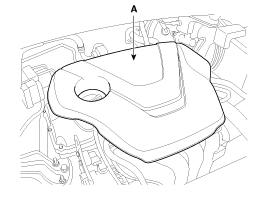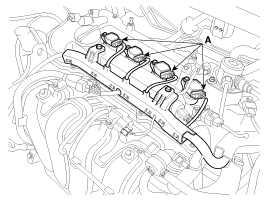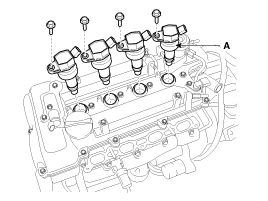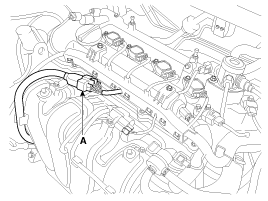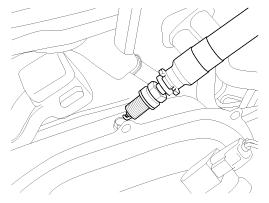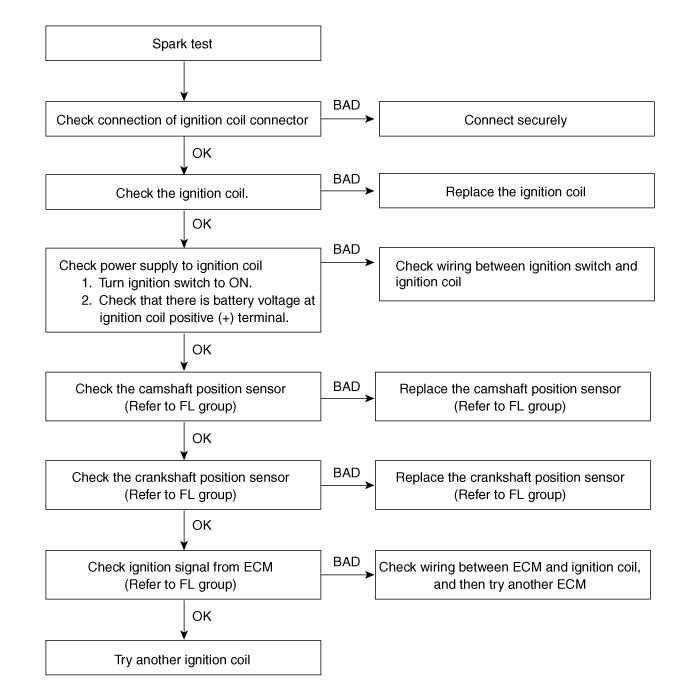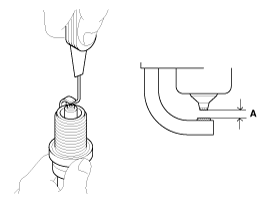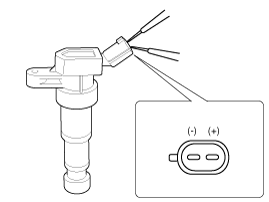 Hyundai Veloster: Repair procedures
Hyundai Veloster 2011-2017 Service Manual / Engine Electrical System / Ignition System / Repair procedures
Hyundai Veloster: Repair procedures
Hyundai Veloster 2011-2017 Service Manual / Engine Electrical System / Ignition System / Repair procedures
On-vehicle Inspection
| Spark Test |
| 1. |
Remove the engine cover (A).
|
| 2. |
Disconnect the ignition coil connectors (A).
|
| 3. |
Remove the ignition coils (A).
|
| 4. |
Disconnect the injector connector or extension connector (A).
|
| 5. |
Using a spark plug socket, remove the spark plug.
|
| 6. |
Install the spark plug to the ignition coil.
|
| 7. |
Ground the spark plug to the engine.
|
| 8. |
Check if spark occurs while engine is being cranked.
|
| 9. |
Inspect all the spark plugs.
|
| 10. |
Using a spark plug socket, install the spark plug.
|
| 11. |
Install the ignition coil.
|
| 12. |
Reconnect the ignition coil connectors.
|
Inspect Spark Plug
| 1. |
Disconnect the ignition coil connectors (A).
|
| 2. |
Remove the ignition coils (A).
|
| 3. |
Using a spark plug socket, remove the spark plug.
|
| 4. |
Inspect the electrodes (A) and ceramic insulator (B).
Inspection Of Electrodes
|
| 5. |
Check the electrode gap (A).
|
Inspect Ignition Coil
| 1. |
Measure the primary coil resistance between terminals (+) and
(-).
|
 Description and Operation
Description and Operation
Descrition
Ignition timing is controlled by the electronic control ignition timing
system. The standard reference ignition timing data for the engine operating
conditions are preprogrammed i ...
 Charging System
Charging System
...
See also:
Towing service
If emergency towing is necessary, we recommend having it done by an authorized
Hyundai dealer or a commercial tow-truck service. Proper lifting and towing procedures
are necessary to prevent dam ...
Components and Components Location
Component Location
1. Start Stop Button(SSB)
2. FOB key
3. Smart key unit
4. Interior antenna 1
5. Interior antenna 2
6. Tailgate antenna
7. Door handle & ...
Washer fluid
Checking the washer fluid level
The reservoir is translucent so that you can check the level with a quick visual
inspection.
Check the fluid level in the washer fluid reservoir and add fluid if ...
Categories
- Hyundai Veloster Manuals Home
- Hyundai Veloster 2010-2017 Owner's Manual
- Hyundai Veloster 2010-2017 Service Manual

